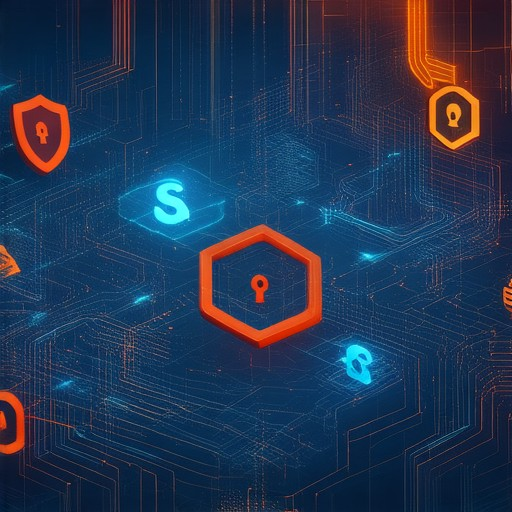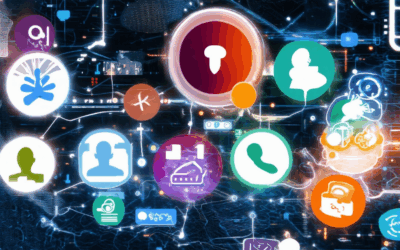In today’s digital age, data has become one of the most valuable assets, yet it’s also one of the most vulnerable. As users, we generate vast amounts of personal information every day, from sensitive details to everyday interactions. However, with increasing cyber threats and evolving regulatory environments, ensuring the protection of this data has never been more critical. Whether you’re an individual seeking control over your personal information or a business aiming to safeguard customer trust, understanding the fundamentals of data protection is essential. This comprehensive guide dives into the intricacies of user data protection, exploring the key principles, policies, and practices designed to empower users and maintain integrity in the digital world. By examining the roles of governments, tech companies, and individuals, we’ll uncover how everyone can contribute to fostering a safer online environment. From understanding your rights to learning effective strategies for data security, this guide serves as a cornerstone for navigating the complexities of modern data protection.
Key Takeaways
– Adhere to the 7 core data protection principles to ensure lawful, fair, and secure data handling, fostering user trust and compliance with regulations like GDPR and CCPA.
– Prioritize consent and user control to respect individual rights, allowing users to access, correct, or delete their data as required.
– Minimize data collection by gathering only essential information, anonymizing or pseudonymizing data to reduce privacy risks.
– Implement robust security measures to protect sensitive data, including encryption and access controls, as outlined by standards like HIPAA and PCI-DSS.
– Comply with data retention policies to store data only as long as necessary and delete it promptly when no longer needed.
– Ensure accuracy and integrity by keeping data updated and secure, reducing the risk of breaches or misuse.
– Maintain accountability by documenting data processing activities and demonstrating compliance with relevant regulations.
– Understand the 4 key data protection areas: Personal Data, Sensitive Data, Personally Identifiable Information (PII), and Non-Personal Data, each requiring tailored protection strategies.

User Data Protection
User data protection refers to the measures taken to ensure that personal and sensitive information is securely managed, accessed, and stored. This includes protecting data from unauthorized access, misuse, or disclosure. User data protection is essential for maintaining privacy, security, and trust in systems and services.
Why is User Data Protection Important?
- Prevents Identity Theft : Safeguards personal information like Social Security numbers, birthdates, and addresses.
- Ensures Compliance : Helps organizations meet legal and regulatory requirements regarding data handling.
- Builds Trust : Protects user confidence in brands and platforms by demonstrating commitment to security.
- Mitigates Risks : Reduces the potential for financial fraud, data breaches, and reputational damage.
Best Practices for User Data Protection
- Encryption : Use strong encryption to protect data at rest and in transit.
- Secure Storage : Store sensitive information in encrypted and controlled databases.
- Access Control : Implement multi-factor authentication and limit access to authorized individuals.
- Regular Audits : Conduct frequent security assessments to identify vulnerabilities.
- Training : Educate users on best practices for handling and securing their data.
Tools and Resources for Enhanced Protection
- BlindBrowser : A privacy-focused platform offering tools for secure browsing and online anonymity. Visit BlindBrowser for more details.
- Password Managers : Use tools like LastPass or Dashlane to manage and secure passwords.
- VPN Services : Encrypt internet traffic with services like ExpressVPN or NordVPN .
By adopting these practices and utilizing the right tools, users and organizations can effectively protect their data and ensure a safer digital experience.
Data Protection Players
The primary participants in data protection are:
- Data Controller : Responsible for determining the purposes for which personal data is collected and how it’s used, ensuring compliance with regulations like GDPR and CCPA.
- Data Processor : Handles the actual processing of data on behalf of the controller, utilizing tools and systems to maintain security and confidentiality.
- Data Subject : Individuals whose data is collected and have rights regarding its usage, such as access, correction, and deletion requests.

Data Protection Rights Overview
Under global data protection regulations like GDPR (General Data Protection Regulation) and CCPA (California Consumer Privacy Act), individuals have specific rights regarding their personal data. These rights ensure transparency, control, and accountability from organizations handling personal information.
The primary rights include:
- Right of Access: Individuals can request access to their personal data held by organizations.
- Right to Rectification: They can correct or update inaccurate personal information.
- Right to Erasure: Known as the “right to be forgotten,” individuals can request deletion of their data under certain conditions.
- Right to Restrict Processing: Users can limit how their data is used, such as withdrawing consent for specific purposes.
- Right Not to Be Subject to Automated Decision-Making: Individuals can object to decisions made solely through algorithms without human intervention.
Enforcement and Compliance
Regulators enforce these rights through strict penalties, encouraging organizations to take compliance seriously. Many countries have adopted similar laws to protect citizens’ data privacy, ensuring cross-border compliance remains consistent.
Additional Protections
Beyond the basic rights, many legal frameworks provide further protections, such as data minimization (collecting only essential data) and requiring clear privacy notices before data collection. Users often have the right to withdraw consent and receive deleted data upon request.
Reporting Breaches and Exhaustion of Rights
Organizations must report significant data breaches affecting individuals’ rights. If an individual exhausts their rights repeatedly without success, they may seek recourse through regulatory bodies or legal action.
Staying Informed
To exercise these rights effectively, individuals should monitor their data usage and review privacy policies. For further guidance, visit BlindBrowser.com , which offers tools and resources to enhance online privacy and manage data preferences.

The 7 Key Data Protections Explained
Data protection is a fundamental aspect of modern digital privacy, ensuring individuals’ personal information is handled responsibly and securely. Below are the seven essential data protection principles every organization should adhere to:
- Lawfulness and Fairness: Personal data must be processed lawfully and fairly. Organizations must obtain explicit consent from individuals before collecting or using their data, except in cases where legal permission is granted.
- Purpose Limitation: Data collection should have a clear and stated purpose. Organizations must specify why personal data is being collected and how it will be used, avoiding excessive data gathering.
- Data Minimization: Collect only the minimum amount of personal data necessary for the intended purpose. Excessive data collection can lead to privacy breaches and misuse.
- Accuracy: Personal data must be accurate and kept up-to-date. Organizations must take reasonable steps to ensure the information they hold is correct and current.
- Storage Limitation: Data should not be retained longer than necessary. Organizations must define retention periods and ensure data is deleted when it is no longer needed or when a request for deletion is received.
- Integrity and Confidentiality: Personal data must be protected from unauthorized access, breaches, or leaks. Organizations must implement robust security measures to safeguard sensitive information.
- Accountability: Organizations must be able to demonstrate compliance with data protection regulations. They should maintain records of data processing activities and be prepared to provide proof upon request.
By adhering to these principles, organizations can build trust with users, comply with legal requirements, and protect individual rights. Understanding and implementing these data protections is crucial for maintaining privacy and security in the digital age.
What Are the 3 Main Data Protection Policies?
The three primary data protection policies ensure organizations handle personal data responsibly and securely. These policies are foundational to compliance with regulations like GDPR and CCPA.
- 1. Consent and User Control: Organizations must obtain explicit consent from individuals before collecting or processing their personal data. Individuals have the right to access, correct, or delete their data, and to withdraw consent at any time.
- 2. Data Minimization: Collect only the essential personal data necessary for the specified purpose. Anonymize or pseudonymize data wherever possible to minimize the risk of harm if the data is intercepted.
- 3. Security and Confidentiality: Implement technical and organizational measures to safeguard personal data against unauthorized access, accidental disclosure, or unlawful destruction. This includes encryption, access controls, and regular monitoring of systems.

What Are the 4 Key Areas of Data Protection?
The four primary areas of data protection revolve around safeguarding sensitive information and ensuring compliance with relevant regulations. Here’s a breakdown:
- Personal Data
- Personal data refers to any information that can identify an individual, such as names, email addresses, phone numbers, or IP addresses.
- Protection measures include encryption, secure storage, and limited access to authorized personnel only.
- Laws like the General Data Protection Regulation (GDPR) in Europe mandate strict rules for handling personal data.
-
Sensitive Data
- Sensitive data includes information related to health, biometrics, or financial records, which demands heightened protection.
- Examples include Social Security Numbers, medical records, and credit card details.
- Industries like healthcare and finance must adhere to standards like HIPAA and PCI-DSS .
-
Personally Identifiable Information (PII)
- PII is any data that can be linked to a specific individual, even without additional information.
- Common forms include email addresses, social security numbers, and driver’s licenses.
- Organizations must implement multi-factor authentication and regular security audits to protect PII.
-
Non-Personal Data
- Non-personal data does not directly identify individuals but may still require protection, especially if it relates to sensitive categories.
- Examples include cookies, analytics data, and logs from website visits.
- Standards like ISO/IEC 27001 provide frameworks for managing non-personal data securely.
By focusing on these four areas, organizations can establish robust data protection practices, ensuring compliance and minimizing risks associated with data breaches.




